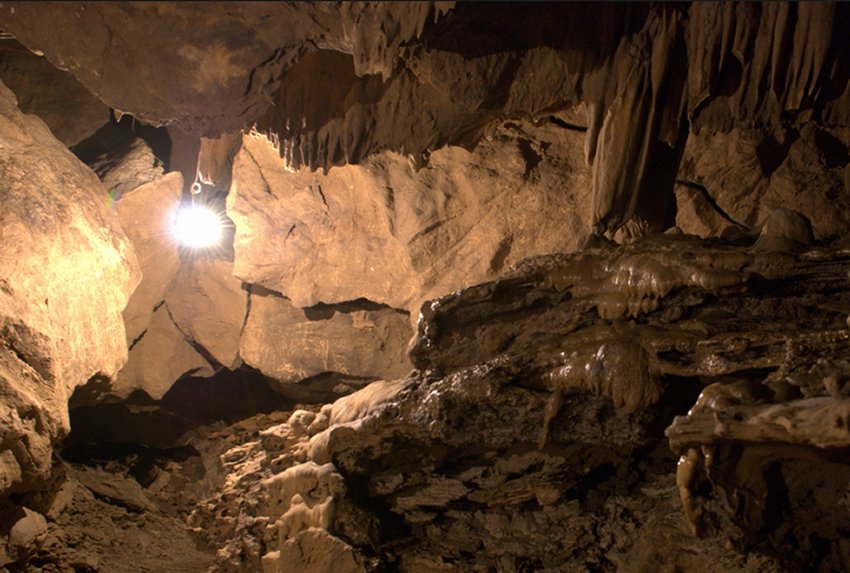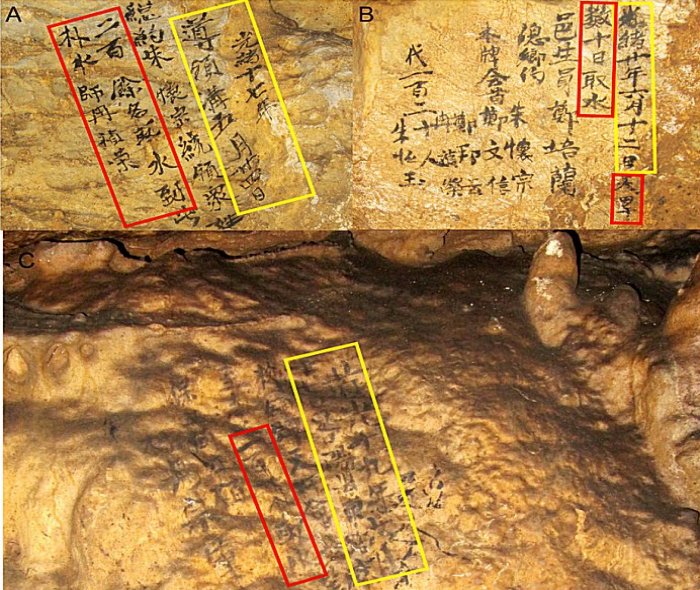MessageToEagle.com – Ancient walls of a cave in central Asia, are covered with graffiti, which tells a 500-year-old story of climate change.
These unique writings, which were found in Dayu Cave in the Qinling Mountains of central China describe the seven drought events between 1520 and 1920 and their effects on the local population.
The climate in the area around the cave is dominated by the summer monsoon, in which about 70 percent of the year’s rain falls during a few months.

This means that when the monsoon is late or early, too short or too long, it has a major impact on the region’s ecosystem.
“In addition to the obvious impact of droughts, they have also been linked to the downfall of cultures-when people don’t have enough water, hardship is inevitable and conflict arises,” said Sebastian Breitenbach, one of the researchers from the University of Cambridge.

“In the past decade, records found in caves and lakes have shown a possible link between climate change and the demise of several Chinese dynasties during the last 1800 years, such as the Tang, Yuan and Ming Dynasties.”
According to the inscriptions found in the cave, residents would come to the cave both to receive water and to pray for rain in times of drought. An inscription from 1891 reads:
“On May 24th, 17th year of the Emperor Guangxu period, Qing Dynasty, the local mayor, Huaizong Zhu led more than 200 people into the cave to get water. A fortune-teller named Zhenrong Ran prayed for rain during the ceremony.”
Another inscription from 1528 actually reads,” Drought occurred in the 7th year of the emperor Jiajing period, Ming Dynasty. Gui Jiang and Sishan Jiang came to Da’an town to acknowledge the Dragon Lake inside in Dayu Cave.”
The droughts of the 1890s actually led to severe starvation and trigger local social instability, which eventually resulted in a fierce conflict between government and civilians in 1900s.
The drought in 1528 also led to widespread starvation, and there were even reports of cannibalism.
The scientists also removed sections of cave formation and analyzed the stable isotopes and trace elements contained within. This told them about the past climate conditions. Then, they used their results to construct a model of future precipitation in the region, starting in 1982.
Their model correlated with a drought that occurred in the 19902 and suggests another drought in the late 2030s.
The findings reveal a bit more about the climate of this region, which may allow researchers to better understand what conditions this area may face in the future.
The findings are published in the journal Scientific Reports.
MessageToEagle.com






